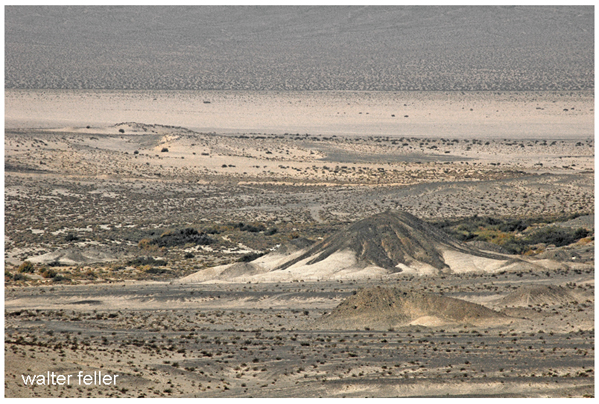Lane's Crossing
Man Dies at Lane's from Arrow Wounds
 Bitter Springs
Bitter SpringsIt was Paiutes who were believed to have committed several killings on the desert during the early part of 1860. The first incident occurred in January. A band of Paiutes had stolen some cows and horses from a herd in the vicinity of "the Vegas", and a party was sent to recover the stock. One of the men who went in search of the cattle was attacked by Indians, and was already dying from arrow wounds by the time his companions found him.
In February, the commander of Fort Tejon, Colonel B. L. Beall, detailed a squad of First Dragoons to pursue the Indians. Lieutenant Carr and 25 men were directed to proceed out Soledad Pass and then across the desert to Cajon Pass to search for Indians who had been stealing horses in that area. From there they were to continue "out to the Mojave, the scene of the late murder, down the river to Lane's crossing." Carr stated arrogantly that he would "thoroughly chastise the rascals who have been committing such depredations...."
If Lieutenant Carr thought a quick pass through Indian country with a squad of 25 troops was going to suppress the Indians, he was quite mistaken. The very next month well-known merchant Thomas Williams and his brother-in-law, Parmeno Jackman, were slain on the Mojave Desert while bringing a train of wagons into California, for the purpose of hauling freight back to Utah.
Their party, made up of teamsters and a number of passengers, had reached Dry Lake when Williams and Jackman left the train and rode ahead to look for water and forage. They came to Bitter Springs, where they joined with four Paiute Indians who guided them to a grazing area a few miles away.
Not expecting trouble, since the Indians along the trail had all seemed friendly, the two men had left their guns behind with the wagon train -- an unwise thing to do in the desert under any circumstances, and in this instance a fatal mistake on their part. On their way back to Bitter Springs, the Indians began shooting arrows into them. Helpless without firearms, the men spurred their horses toward the road in an attempt to escape.
Both men were mortally wounded, but Williams was carried back to camp by his horse and the alarm was raised. A party was formed and went in search of Jackman, and when they found him he was nearly dead from his injuries and the extreme cold. Williams died later that day and Jackman was taken to Lane's for help. "Mr. Williams," the Los Angeles Star reported, "was buried at Bitter Springs, and Mr. Jackman was brought to Lane's ranch on the Mojave, where he receives every care, but his wounds are of such a nature that no hope of his recovery is entertained."
Dr. Alonzo Ainsworth came from San Bernardino to attend to Jackman, who was "lying at Lane's...in a most critical condition." Mr. Jackman was moved to the home of the doctor, and died there April 19th, after a month of continual suffering.
< Previous - Next >
Editor's Note:
Bitter Spring, 1860
-=-